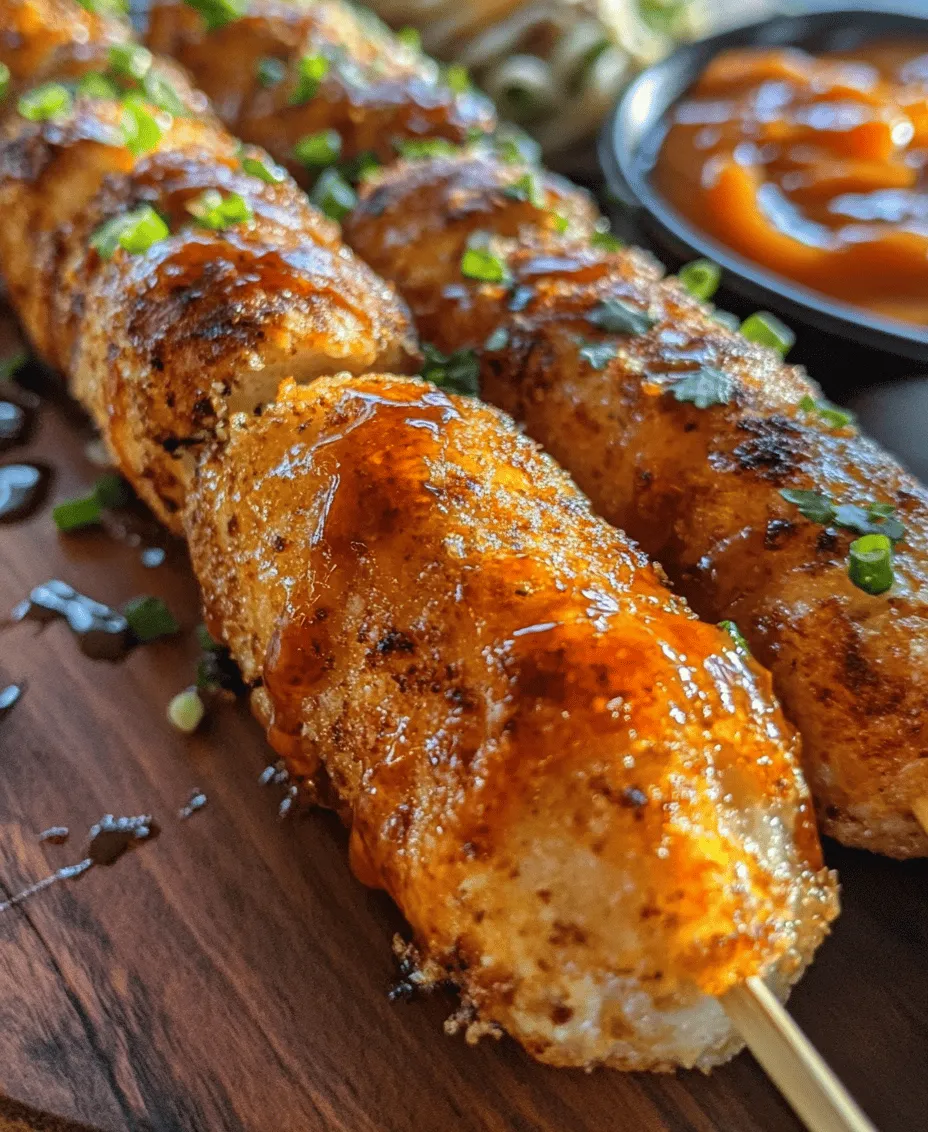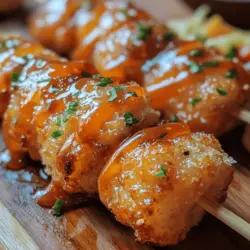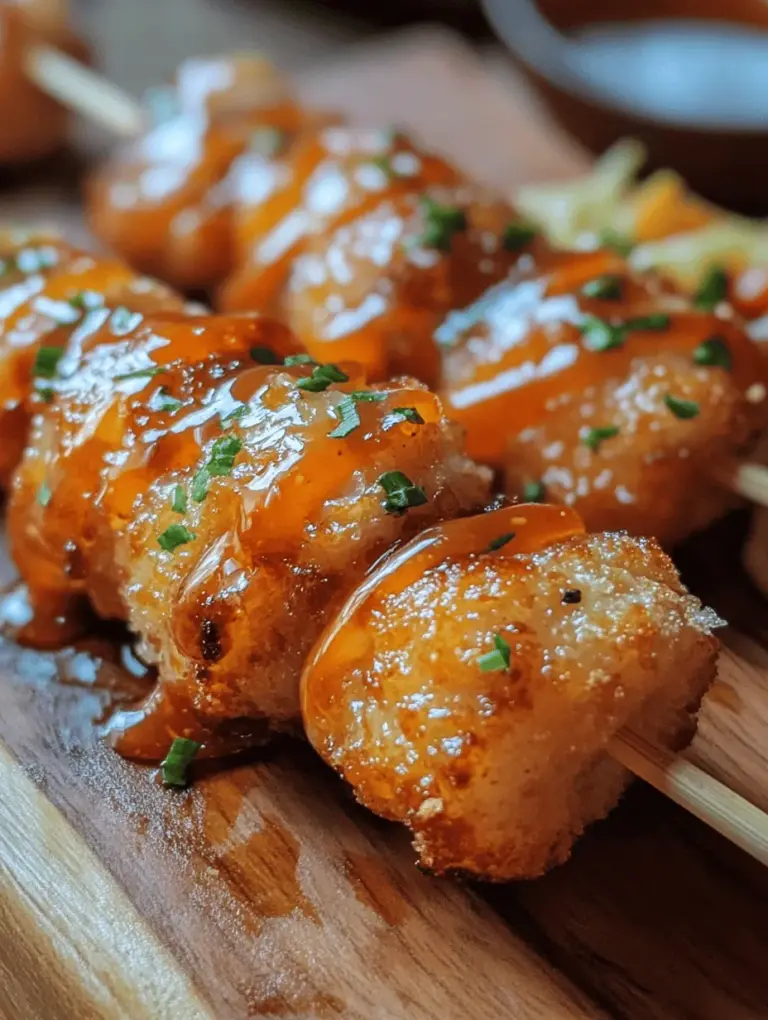Introduction
Korean corn dogs have taken the world by storm, emerging as a beloved street food delicacy that tantalizes taste buds with their crispy exterior and savory filling. Unlike their American counterparts, these delicious treats are not just straightforward hot dogs coated in batter; they are a culinary experience that combines the best of both worlds. The allure of a Korean corn dog lies in its unique batter, which is both crispy and chewy, enveloping the juicy hot dog within. This delightful snack is perfect for any occasion, whether you’re hosting a casual gathering or simply craving a tasty bite.
Making Korean corn dogs at home is not only easy but also allows for endless customization. Whether you prefer classic toppings like mustard and ketchup or wish to experiment with more adventurous choices like cheese, kimchi, or even a drizzle of honey, the possibilities are limitless. In this article, we’ll guide you through the process of creating these mouthwatering treats in your own kitchen, ensuring you can impress family and friends with your culinary skills.
Understanding Korean Corn Dogs
Korean corn dogs hold a special place in the hearts of many, not just for their delicious taste but also for their cultural significance in Korean cuisine. These corn dogs are a staple at street food stalls and festivals, offering a quick and satisfying meal that appeals to both locals and tourists alike. While traditional corn dogs in the United States typically feature a hot dog on a stick, dipped in cornmeal batter and deep-fried, Korean corn dogs elevate this concept with unique ingredients and preparation techniques.
One of the standout features of Korean corn dogs is the use of sweet rice flour, also known as “mochi flour.” This ingredient contributes to the signature chewy texture that sets them apart from other variations. The batter is often enhanced with panko breadcrumbs, which create an extra crispy coating when fried. Additionally, Korean corn dogs can be filled with various ingredients, such as melted cheese or even potatoes, making them a versatile option for any palate.
The experience of enjoying a Korean corn dog is not just about the taste; it’s about the joy of indulging in a fun and flavorful snack that brings people together. Whether enjoyed at a bustling street market or prepared in the comfort of your home, these corn dogs are sure to leave a lasting impression.
Ingredients Overview
Before diving into the cooking process, it’s important to gather all the necessary ingredients to create the perfect Korean corn dog. Each component plays a crucial role in achieving the ideal flavor and texture. Here’s a detailed overview of what you’ll need:
– Hot Dogs: The star of the dish, hot dogs come in various varieties, including beef, pork, chicken, or even vegan options. Choose high-quality hot dogs for the best results, as they directly affect the flavor profile of your corn dog.
– Sweet Rice Flour: This unique ingredient is essential for achieving the characteristic chewy texture of Korean corn dogs. Sweet rice flour, or “glutinous rice flour,” is made from short-grain rice and contributes to the batter’s elasticity.
– All-Purpose Flour: This flour provides structure to the batter, helping it adhere well to the hot dogs. It balances out the chewiness of the sweet rice flour, creating a harmonious texture.
– Sugar: A small amount of sugar enhances the overall flavor of the batter, giving it a slight sweetness that complements the savory hot dogs.
– Baking Powder: This leavening agent helps create a light and airy batter, contributing to the crispy exterior when fried.
– Salt: A pinch of salt elevates the flavor of the batter, ensuring a well-rounded taste.
– Water: Adjusting the amount of water is crucial for achieving the right batter consistency. The batter should be thick enough to coat the hot dogs but not so thick that it becomes clumpy.
– Panko Breadcrumbs: These Japanese-style breadcrumbs are coarser than regular breadcrumbs and provide an exceptional crunch when fried. They are a key ingredient for that irresistible crispy texture.
– Vegetable Oil: For frying, the type of oil you choose is important. Vegetable oil has a high smoke point, making it ideal for deep-frying. Also, maintaining the correct oil temperature is crucial for achieving a golden brown corn dog.
– Optional Toppings: Korean corn dogs are often topped with a variety of delicious options. Traditional toppings include ketchup and mustard, but you can also get creative with options like cheese sauce, spicy mayo, or even a sprinkle of sugar for a sweet twist.
Preparing the Hot Dogs
Now that you have all your ingredients ready, it’s time to prepare the hot dogs. The first step in ensuring your Korean corn dogs are a success is to properly prepare the hot dogs. Start by selecting quality hot dogs that will provide the best flavor. Look for brands that use natural ingredients and avoid fillers whenever possible.
Next, it’s essential to insert the skewers properly. Choose sturdy wooden skewers, about 6-8 inches long, and pierce each hot dog lengthwise. Ensure that the skewer goes through the center of the hot dog for stability during frying. This step is crucial as it allows for easy handling and prevents the hot dog from sliding off during the cooking process.
Before dipping the hot dogs in the batter, make sure they are dry. Pat them with a paper towel to remove any moisture. A dry surface helps the batter adhere more effectively, resulting in a beautifully coated corn dog. If desired, you can also roll the hot dogs in some all-purpose flour before dipping them in the batter. This extra step can help the batter stick better.
Crafting the Perfect Batter
The batter is the heart and soul of the Korean corn dog, so it’s essential to get it right. To begin, combine the sweet rice flour, all-purpose flour, sugar, baking powder, and salt in a mixing bowl. Whisk these dry ingredients together until they are well combined.
Next, gradually add water to the dry mixture, whisking continuously to achieve a smooth batter. The goal is to create a thick batter that can coat the hot dogs without dripping excessively. If the batter is too thick, add a little more water, a tablespoon at a time, until you reach the desired consistency. Conversely, if it’s too thin, you can add a bit more flour to thicken it.
As you whisk, watch for visual cues: the batter should be thick enough to hold its shape when dipped around the hot dog. It should cling well without falling off. A good test is to dip a spoon into the batter and observe how it drapes off; it should leave a ribbon-like trail.
Once your batter is ready, you’re well on your way to creating crispy Korean corn dogs that are sure to impress. The next steps involve coating the hot dogs and frying them to perfection, ensuring each bite is a delightful explosion of flavor and texture. Stay tuned for the next part of this article, where we will guide you through the frying process and explore creative topping ideas!

Coating Techniques
Coating your hot dogs properly is crucial for achieving that signature crispy texture of Korean corn dogs. Begin by ensuring your hot dogs are patted dry with a paper towel; this prevents excess moisture from interfering with the batter’s adherence.
To coat your hot dogs, first, dip them into the batter, ensuring they are fully submerged. Lift them out and allow excess batter to drip off—this is vital as too much batter can lead to uneven frying and a soggy texture. The key to a successful coating is even coverage; if you notice any patches where the batter is too thin, simply dip the hot dog back into the batter to build it up.
After coating in the batter, it’s time to roll the hot dogs in panko breadcrumbs. Panko gives that extra crunch and texture that sets Korean corn dogs apart. Place the battered hot dog in a shallow dish filled with panko, rolling it gently to ensure that every surface is covered. Press down slightly to help the breadcrumbs adhere better, which will prevent them from falling off during frying.
A common pitfall to avoid is letting too much batter drip off before coating with panko. If this happens, simply re-dip the hot dog into the batter and then back into the breadcrumbs. Ensuring an even and generous coating will enhance the overall flavor and texture of your corn dogs, resulting in that delightful crunch with every bite.
Frying the Corn Dogs
Now that you have your corn dogs coated and ready, it’s time to fry them to perfection. The ideal oil temperature for frying corn dogs is around 350°F (175°C). Maintaining this temperature is crucial; too low, and they will absorb oil and become greasy, too high, and they may burn on the outside while remaining raw inside. A deep-frying thermometer is an excellent investment to ensure you achieve and maintain the right temperature.
When frying, it’s important to do so in batches. Overcrowding the pan can cause the oil temperature to drop, leading to a soggy texture instead of that desired crispy finish. Depending on the size of your pot, aim to fry 2-4 corn dogs at a time. Gently lower each corn dog into the hot oil using a slotted spoon or tongs, taking care to avoid splashing.
Fry the corn dogs for approximately 4-5 minutes, or until they turn a beautiful golden brown. Turn them occasionally for even cooking. To know when they are perfectly cooked, look for that golden color and a crisp texture. You can also insert a kitchen thermometer into the hot dog center—aim for at least 165°F (74°C) for food safety.
Draining and Serving
Once your corn dogs are fried to golden perfection, it’s time to drain them of excess oil. Use a slotted spoon to remove the corn dogs from the oil, allowing them to drip for a few seconds. Then, transfer them to a plate lined with paper towels. This step is crucial as it helps absorb any residual oil, ensuring your corn dogs remain crisp rather than greasy.
Serving your corn dogs hot is essential to enjoy their best flavor and texture. You can present them on a platter, perhaps with a small bowl of dipping sauce in the center. For added flair, consider skewering each corn dog with a decorative toothpick or serving them on individual wooden sticks for a fun, street-food vibe.
Topping and Flavor Variations
One of the most enjoyable aspects of making crispy Korean corn dogs at home is the opportunity for customization. Here are some topping options that can elevate your dining experience:
– Classic Condiments: Ketchup and mustard are timeless options that complement the savory flavor of the corn dogs. Drizzle them on top or serve them on the side for dipping.
– Unique Sauces: For a modern twist, try spicy mayo, which combines mayonnaise with a touch of sriracha for heat. Sweet chili sauce also adds a delightful sweetness that pairs beautifully with the crispy exterior.
– Crunchy Toppings: Get creative with crunchy toppings like crushed ramen noodles, which add an unexpected texture, or sprinkle some toasted sesame seeds for a nutty flavor.
– Cheese: For cheese lovers, consider adding a sprinkle of shredded cheese on top while the corn dogs are still hot so it can melt slightly for an irresistible cheesy finish.
Experimenting with these toppings allows for a fun and varied culinary experience. You can even create a topping bar for gatherings, letting guests customize their corn dogs to their liking.
Nutritional Information
While crispy Korean corn dogs are undoubtedly a delicious indulgence, it’s important to be aware of their nutritional content. A typical corn dog contains approximately 250-300 calories, depending on the size and toppings used. They are rich in protein, primarily from the hot dogs, which can provide around 8-10 grams per serving.
If you’re looking to modify the recipe for dietary preferences, consider using vegan hot dogs or gluten-free flour and panko for a gluten-free version. These changes can cater to a range of dietary needs while still allowing you to enjoy this tasty treat.
Conclusion
Making crispy Korean corn dogs at home is an exciting culinary adventure that combines the joy of frying with the creativity of customization. The process, from the perfect batter to the selection of toppings, allows for personal expression in the kitchen. Whether you prefer classic flavors or bold new combinations, this recipe invites you to indulge in a delightful treat that echoes the vibrant street food culture of Korea.
Encouraging readers to experiment with their toppings and variations not only enhances the dining experience but also fosters creativity in the kitchen. So gather your ingredients, invite some friends over, and embark on this delicious journey of crispy Korean corn dogs. Enjoy every crunchy bite as you relish the flavors and the fun of creating this beloved dish right at home!

